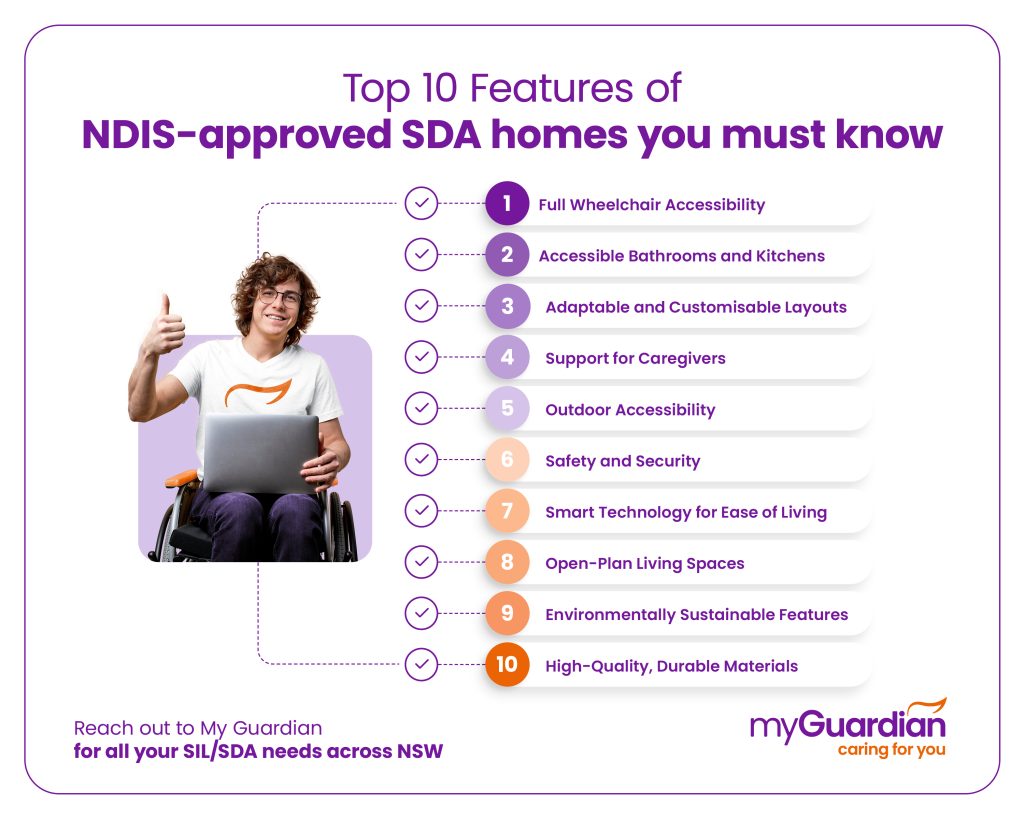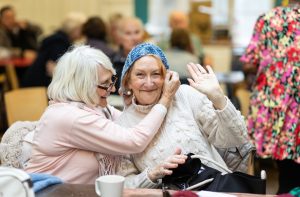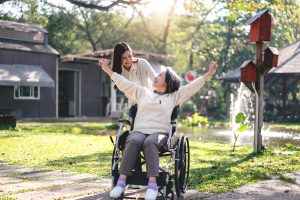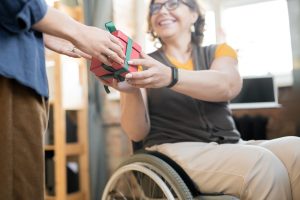10 Features of NDIS-approved SDA home You Must know
Finding a place to live isn’t just about having four walls and a roof — it’s about feeling comfortable, safe, and totally in control of your life.
For individuals with significant disabilities or higher support needs, the right home can make a world of difference. That’s where Specialist Disability Accommodation (SDA) comes in.
SDA homes are built to support independence, safety, and day-to-day ease. These homes aren’t just “accessible” – they are functional, thoughtful, and ready to support real-life needs, whether you use a wheelchair, need onsite assistance, or rely on assistive technologies.
At My Guardian, we support people living in SDA homes across New South Wales with personalised care services that align with each participant’s NDIS goals. Our focus is on helping you live with confidence, independence, and the right support at home
What is an SDA Home?
Specialist Disability Accommodation (SDA) refers to specially built homes just for people with significant disabilities who need extra support in their daily lives. These homes go beyond basic accessibility. They are designed to enable more independent living, with space and features that support complex care requirements.
SDA homes can be apartments, houses, villas or group homes and are classified into design categories such as Improved Liveability, Robust, Fully Accessible, and High Physical Support.
Top Features of an SDA Home
SDA homes offer the independence of living on your own, with the right support and resources in place. But what key features should you look for in a high-quality SDA home?
1. Full Wheelchair Accessibility
SDA homes must be designed with complete mobility access in mind. This includes:
- Wide hallways and doorways to accommodate wheelchairs or mobility scooters without obstruction.
- Step-free entryways to prevent trip hazards and ensure ease of access in and out of the home.
- Ramps instead of stairs with gentle gradients, non-slip surfaces, and handrails.
- Low-height fixtures, such as light switches, kitchen counters, and wardrobe rails, to allow easy reach from seated positions.
Example: A well-designed SDA kitchen may feature an under-bench wheelchair space and pull-out shelves, allowing the resident to cook or prepare meals comfortably.
2. Accessible Bathrooms and Kitchens
These essential spaces should support independence with intuitive and inclusive design. Key features include:
- Roll-in, curbless showers with shower chairs and hand-held showerheads.
- Grab rails and support bars installed near toilets, baths, and showers to prevent falls.
- Lower benchtops and accessible appliances in kitchens, such as front-facing ovens and side-opening microwaves.
- Lever-style taps or sensor-activated faucets that are easier to use for individuals with limited dexterity.
Example: An accessible bathroom may have non-slip vinyl flooring, strategically placed grab bars, and a wide turning radius to suit power wheelchair users.
3. Adaptable and Customisable Layouts
A quality SDA home should cater to a range of disabilities and evolve as the occupant’s needs change over time. This adaptability might include:
- Modular or open-plan layouts that allow for future reconfiguration of rooms.
- Adjustable benchtops and shelving that can be raised or lowered as needed.
- Removable internal walls or partitions to expand or repurpose rooms.
Example: A resident with a degenerative condition may need increasing support over time. A home designed with adjustable features enables easier transitions without requiring a full renovation.
4. Support for Caregivers
Many SDA participants require regular or full-time support. Homes should include:
- A separate room for overnight support workers, ideally with its own en-suite.
- Private entrances or adjacent living quarters to provide privacy for both the resident and caregiver.
- Shared monitoring technology, such as two-way communication systems or passive sensors, is used to ensure the resident’s well-being without constant supervision.
Example: A two-bedroom SDA apartment with an adjoining support worker suite allows for close assistance while maintaining personal space.
5. Outdoor Accessibility
Access to outdoor areas supports mental well-being and encourages socialisation and leisure. Important features include:
- Flat, paved pathways that accommodate mobility aids.
- Accessible garden beds raised to a comfortable height for those in wheelchairs.
- Shaded seating areas for rest, relaxation, or visits from family and friends.
- Secure fencing for privacy and safety.
Example: An SDA villa may have a back patio with wide access doors, raised planter boxes for gardening, and a smooth, non-slip deck area for outdoor dining.
6. Safety and Security
Safety is critical in disability accommodation. Homes should incorporate:
- Non-slip flooring throughout, particularly in wet areas.
- Emergency call buttons or alarm systems that connect to on-site or remote support.
- Well-lit entry points and pathways to prevent accidents and improve visibility.
- Secured access control, such as keypads or fob entry, to ensure resident safety and privacy.
Example: An SDA apartment block may offer swipe-card access for both residents and support staff, while still allowing emergency services access in case of need.
7. Smart Technology for Ease of Living
Technology helps individuals control their environment independently. Common features include:
- Voice-activated systems for lights, appliances, and blinds.
- Smart thermostats to regulate room temperatures without needing to reach controls.
- Automated doors and windows that can be operated remotely or by sensors.
- Fall detection systems and motion sensors that notify caregivers if something goes wrong.
Example: A resident with limited mobility might use a tablet or voice assistant to unlock the door, adjust lighting, and call for help—all from one place.
8. Open-Plan Living Spaces
Open spaces reduce barriers and create a more inclusive home environment. Features may include:
- Minimal internal walls to improve maneuverability for wheelchairs or mobility aids.
- Wide clearances between furniture and fixtures to allow easy navigation.
- Multi-use spaces that accommodate communal activities, dining, and personal relaxation.
Example: An open living-dining area with accessible storage and seamless flooring supports both social interaction and personal comfort.
9. Environmentally Sustainable Features
Eco-friendly design is not only good for the planet—it’s also cost-effective. Look for:
- Energy-efficient appliances that reduce electricity bills.
- Solar panels to generate renewable energy.
- Rainwater tanks for garden irrigation or toilet flushing.
- Insulated walls and windows to maintain comfortable temperatures year-round.
Example: A sustainable SDA home may include double-glazed windows and solar panels, reducing heating costs and environmental impact.
10. High-Quality, Durable Materials
SDA homes experience frequent use and should be built with long-term durability in mind. Recommended materials include:
- Scratch-resistant flooring that’s easy to clean and slip-resistant.
- Reinforced walls for added safety and to support grab rails or mounted devices.
- Weather-resistant exteriors to handle diverse Australian climates.
Example: A bathroom in an SDA property might use commercial-grade vinyl flooring and moisture-resistant wall panels that stand up to frequent cleaning and heavy use.
My Guardian’s Unique Approach to SDA Homes
My Guardian offers Specialist Disability Accommodation (SDA) homes that go beyond the basics, focusing on comfort, independence, and community. Located in key areas across New South Wales—including Penrith, Blacktown, Leumeah, Bathurst, Moorebank, Revesby, Liverpool, Wollongong and North Strathfield—these homes are thoughtfully designed to meet the diverse and evolving needs of NDIS participants.
With 24/7 on-site support and personalised care plans, My Guardian blends high-quality accommodation with compassionate, person-centred care, helping residents live not just independently, but with dignity and joy.
Reach out to our friendly team today for a free, no-obligation consultation, if you’re looking for a trusted SIL Provider or SDA housing support in NSW. We’d love to chat and help you navigate the next step. Click here to get in touch.
Browse our preferred SIL/SDA Homes across NSW here.









